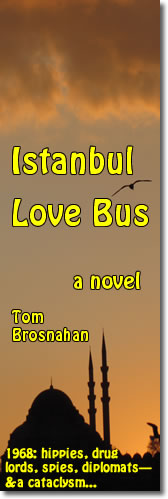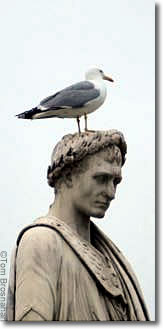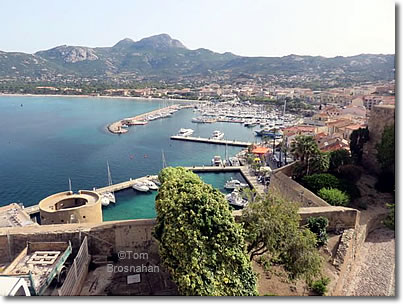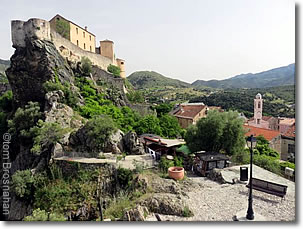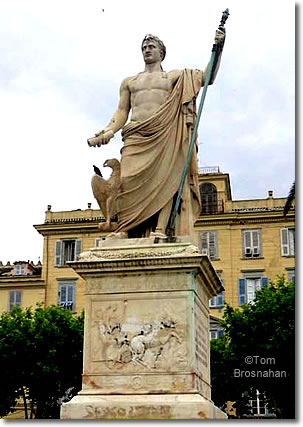 |
Corsica, France Guide | |
| This French island of Italian heritage is rugged, beautiful, and well worth a visit for scenery, cuisine, beaches, boats, hiking and history. | ||
|
|
|
The mountainous French island of Corsica, 170 km (110 miles) south of the Côte d'Azur (map), is actually geographically closer to Italy—90 km (56 miles) from Tuscany, and only 11 km (6.8 miles) north of the Italian island of Sicily. It's not surprising, then, that Corsica's culture and politics were Italian for most of its history, until 1789, when it officially became a part of France. But French it is today, in part because of a Corsican native son named Napoleone di Buonaparte who, as Napoléon Bonaparte (1769-1821), made himself Emperor of France in 1804 and went on to conquer most of Europe. Napoléon was born in the Corsican city of Ajaccio, today the capital and largest city of the island. Why Visit Corsica?
Corsica's thriving tourism business, along with farming, commerce and light manufacturing, have relieved the island's historical poverty and provincialism. Still proud of their unique culture and language, Corsicans now welcome mostly French, Italian, Dutch, Belgian, German and Swiss visitors. Travelers come to Corsica for its beaches, boating excursions, yachting ports, mountain hiking and beautiful natural scenery. Unless you're hiking in Corsica's mountainous interior, you'll probably spend your time along Corsica's 1000 km (620 miles) of coastline in one of its pretty seaside resort towns. Unlike many parts of France, Anglophone travelers are few here. If English is your native language and you'd like to experience a destination where you'll meet few of your fellow Anglophones, Corsica is it! Corsica has a cuisine all its own, with fish from local waters and lots of charcuterie: sausages, pork and sanglier (wild boar). Corsican wines—red, white and rosé—are simple but well matched to the food.
Where to StayAs a tourist destination, Corsica has lots of good hotels and rental villas in all price ranges. Find yours using the Hotel Search Map to the right.—> Where to Go in CorsicaAjaccioCapital and largest city, with a busy international airport and ferryboat port, historic Ajaccio is a good place to start your explorations of Corsica. More... BastiaA major ferryboat port, Bastia is good for a short visit, and for connections to other Corsican destinations. More... BonifacioDramatic natural beauty, historic citadel, and lots of glitzy yachts, Bonifacio, at the southern tip of the island, is Corsica's version of the Côte d'Azur. More... CalviA delightful sun, sand and sea destination with plenty of scenic beauty, intriguing history and good dining. More... CorteDeep in Corsica's mountainous heartland, Corte is where you can get away from the crowds, and hike into natural beauty for many kilometers—or just around the town if you wish. More... L'Île-RousseA smaller version of nearby Calvi, L'Île-Rousse may be Corsica's perfect beach town: beautiful, historic, easily accessible, easy-going, delightfully small. More... Porto-VecchioDespite its name ("Old Port"), this is quite a modern seaside resort town popular with boaters and yachters. If you come by boat, you'll feel right at home. More... ProprianoA congested one-main-street town, Propriano is also a boaters' place. More... TransportFerriesHuge ferryboats carrying cars and passengers regularly serve the Corsican ports of Ajaccio, Bastia, Calvi, Île-Rousse and Porto-Vecchio traveling from Marseille, Toulon, Nice, and the Italian ports of Livorno, Piombino and Savona (west of Genoa). Other connections from Corsica are to/from the islands of Elba, Majorca and Sardinia. Some voyages are overnight. FlightsAir Corsica, Air France and numerous vacation/holiday-oriented airlines such as Hop! and Ryanair serve Corsica's airports at Ajaccio, Bastia, Calvi and Figari (north of Bonifacio). Transport on CorsicaCorsica is 183 km (114 miles) long from north to south, and 83 km (52 miles) wide from east to west. Most of the island is mountainous, which makes transport take longer than it may first appear on a map. Rental/hire cars are easily available at all the airports and ferry ports, and in the cities. More... Don't expect to drive straight across Corsica from north to south or east to west—it's all mountains. Most of your driving will be along the seacoast, perhaps with excursions inland to Corte and/or hiking trailheads. Intercity buses travel among the major cities and towns. More... Chemins de fer de la Corse (Corsican Railways) trains connect the northern Corsican cities of Ajaccio, Bastia, Calvi, Corte, Île-Rousse and smaller towns along these routes. No trains in southern Corsica, though. More...
|
|
La Citadelle, Corte, Corsica, France. Corsica Hotel Map:
|
